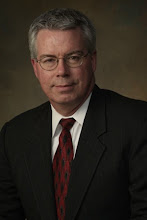…it’s Empowering People”
As I reflected on my coaching activity over the last several months, I realized most of my time was spent with a collective group representing a crucial leadership component in any organization - middle management. I am referring to those Senior Managers and Directors who are typically one or two levels removed from the front lines of the business as well as several layers removed from the boardroom. Yet to be successful, they keep an eye on, and understand the activities of, both ends of the spectrum. Based on recent experience, it is still a challenge as it was when I held similar positions in my own corporate career. In reflection, the expression above from Becky Brodin is a reminder of an integral part of the being a successful middle management leader.
Success in middle management requires the leader to be part tactician, part strategic thinker; part detail-oriented, part big-picture; part manager and every bit a leader! In a constantly changing business environment, middle management leaders have to continuously adapt to changes that come from senior leadership and at the same time effectively manage their teams as they interact daily with the changing demands of customers, vendors and suppliers as well as their own team’s individual goals. With all these demands, empowerment is crucial to their success!
In my own experience, there are four distinct scenarios where leaders in middle management are effective by empowering their teams or being empowered themselves to make the right decisions and achieve their desired results.
The first is being able to be the top when you have to. Being able to make decisions when needed without always having to “run it up the chain of command” is the sign of an empowered leader as well as indicative of a high performing organization. Leaders in middle management should understand the strategic intent well enough to be able to confidently make operational decisions to advance their organizations in alignment with the overall strategy of the business.
The second scenario is the opposite of the first. They need to be the bottom when they have to. Being able to filter and or translate the volume of information that comes from senior leadership requires a current knowledge of what is important to their team and what is not. Passing information on solely based on “it came from the top” has no value other than passing on the message. Effective communication is ensuring the context is meaningful to the audience. Therefore successful leaders either stop meaningless traffic or translate complex messaging into meaningful information.
The third scenario requiring empowerment comes in the form of being a facilitator when necessary. When issues cross the middle management leader’s path, they become opportunities to facilitate a solution rather that solve the problem directly. The ability to empower the parties involved to work through the issue, either directly or possibly through collaboration with other parties the leader can bring to the discussion, is a powerful leadership tool. Not only has the leader helped build new relationships, the parties involved also actively learn through their own empowerment.
The final scenario is similar to the third in that the leader acts as coach when necessary. Coaching helps individuals create their own solutions to issues with the support of the coaching leader. By empowering the individual, the leader once again creates a learning opportunity through the empowerment process and creates a more confident member of their teams through each coaching opportunity.
When I work with leaders in middle management positions, I always explore empowerment on two levels. We look at the leader’s level of empowerment with their own team as well as the level of empowerment they themselves have from their managers. How much is empowerment contributing to your success as a leader?
Lead Well!

